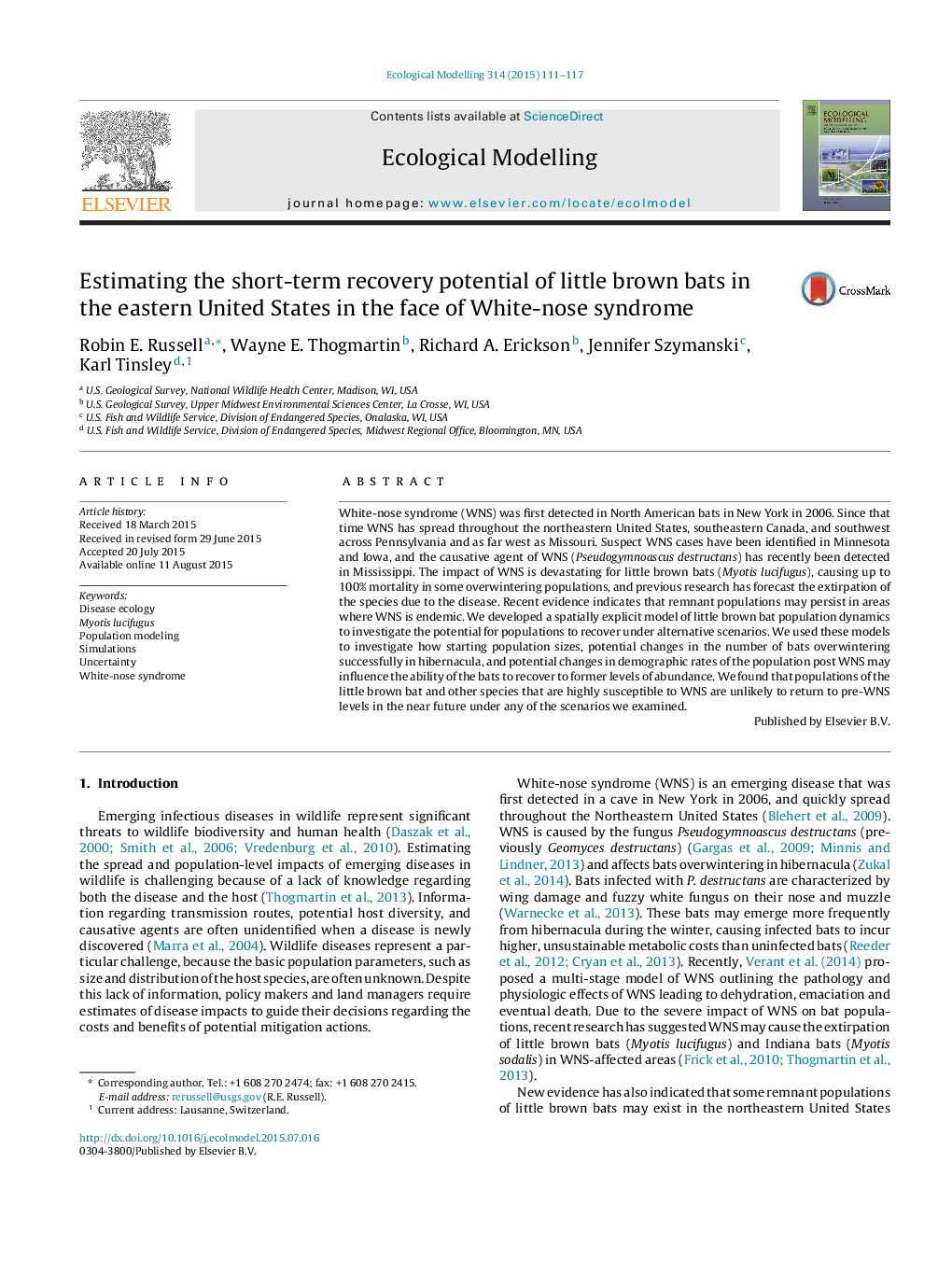| کد مقاله | کد نشریه | سال انتشار | مقاله انگلیسی | نسخه تمام متن |
|---|---|---|---|---|
| 6296506 | 1617433 | 2015 | 7 صفحه PDF | دانلود رایگان |

- White-nose syndrome is a disease that has devastated little brown bat populations.
- We simulate population dynamics of little brown bats in the eastern United States.
- We examine the long-term impacts of White-nose syndrome under three scenarios.
- Little brown bat numbers are likely to remain low for the foreseeable future.
- Recovery potential is dependent on the dynamics of small bat populations.
White-nose syndrome (WNS) was first detected in North American bats in New York in 2006. Since that time WNS has spread throughout the northeastern United States, southeastern Canada, and southwest across Pennsylvania and as far west as Missouri. Suspect WNS cases have been identified in Minnesota and Iowa, and the causative agent of WNS (Pseudogymnoascus destructans) has recently been detected in Mississippi. The impact of WNS is devastating for little brown bats (Myotis lucifugus), causing up to 100% mortality in some overwintering populations, and previous research has forecast the extirpation of the species due to the disease. Recent evidence indicates that remnant populations may persist in areas where WNS is endemic. We developed a spatially explicit model of little brown bat population dynamics to investigate the potential for populations to recover under alternative scenarios. We used these models to investigate how starting population sizes, potential changes in the number of bats overwintering successfully in hibernacula, and potential changes in demographic rates of the population post WNS may influence the ability of the bats to recover to former levels of abundance. We found that populations of the little brown bat and other species that are highly susceptible to WNS are unlikely to return to pre-WNS levels in the near future under any of the scenarios we examined.
Journal: Ecological Modelling - Volume 314, 24 October 2015, Pages 111-117